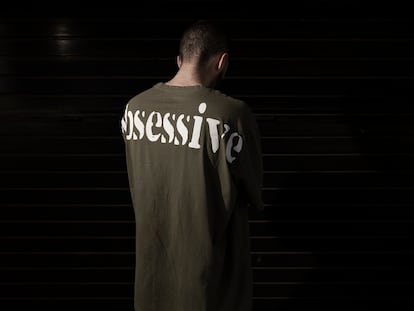Porn for women: Can it really be feminist or ethical?
Adult film directors and sexologists explain the transformation of the porn industry and question whether anything is really changing with its new gendered perspective

Irina Vega had always been very curious about porn. “From the first time I saw a video when I was young, I was really struck by the people who work in it,” recalls the director and producer of Altporn4U.com. At the age of 24, she was living in Barcelona, where she was studying electronics and working in the hospitality industry. At that time, she started an open relationship in which she met people from the porn industry. She was encouraged to give it a try.
Seventeen years have passed since then. Currently, there are those who think that the industry is evolving toward less sordid, more open, transparent and inclusive places, although there are also those who have doubts about it and those who believe that porn, by its very nature, is and always will be a source of exploitation.
“Now, it’s easier to find feminist porn, ethical porn... People who are curious and have a certain sensitivity can look for porn that is much more aligned with their tastes and values now,” says Vega, 41, who has fought for the existence of alternative porn in Spain. “I don’t rely on statistics to produce porn, but I try to do something authorial, creative and with values,” she says. Vega describes her “feminist porn” as films in which equality is considered both in front of and behind the camera: “In front of the camera it should be clear that women also have a role as subjects and not as objects.”
Her website hosts dozens of pay-per-view films. In the manifesto section, they explain that their ethical values are diversity and feminism, which includes acceptance of all kinds of body shapes, gender identities, ages (as long as they are of age) and ethnicities. “The pleasure of all performers matters. Before filming, performers choose who their sexual partners will be, discuss their tastes and agree on practices. Performers can choose whether they want to use a condom or not, providing up-to-date STD testing,” reads the text. In addition, it explains that payments are fair and that “each director or studio that performs is licensed or paid a commission for the sale of their content.”
There are other companies, such as PinkLabel.tv, Hardwerk, Lust Cinema, Pink & White and Wild Galaxies, among others, that are dedicated to this type of production. A subscription to PinkLabel costs €10 ($10.67) per month. Vega explains that “for some years now, platforms have emerged, such as the ones mentioned above, that help independent producers and performers self-manage and upload their own content.”
However, this type of porn is still only a very small part of what is made within the industry. One need only type the word porn into a search engine and, in a matter of seconds, there are over 5.7 billion results on the internet, from which you can access websites that offer free content.
The porn director and producer Paulita Pappel has secured grants from the German government to produce a pornography that invests in this more diverse type of product. “They uploaded it on the internet for free so that anyone could watch it. I think it’s wonderful to see that a government is open and creates such interesting offerings for the public,” Vega says proudly.
For her part, Paulita explains that, since she was a child, she has been conflicted by feeling fascinated by porn while society always instilled in her that it is bad because it exploits women and has a markedly misogynistic character. “Later on, I met feminist women who made a different kind of porn and sought to change it from within the industry.” This movement began to emerge in the United States in the 1980s.
In this type of production, consent and transparency always come first when filming. “We make porn for women because until now porn has been defined as being for men,” she explains. She notes that in her films she aspires to celebrate sexuality, desire and diversity, not only for women but for everyone.
Although she describes what she does as feminist and ethical porn, she has stopped saying so because she no longer wants to reproduce the idea that mainstream porn is wrong. “Today, most porn is done by people who sell it to platforms that distribute it,” she says. For her, the kind of audiovisual content she makes is just like any other genre you can watch on Netflix.
“I’ve been doing porn for the last 20 years and trying to change the way society sees it, offering something beyond the basics.” She explains that she does not just try to create sexual excitement, but that her work seeks to make it a more complete experience and fulfill people’s fantasies in front of the camera. Before each shoot, she sends a questionnaire to all the actors so that they are the ones who choose which positions they want to perform in, their limits and their sexual preferences. “There is and there has to be porn for all tastes, there should be no distinction between genders,” she reflects.
Against the concept of ethical porn
Not everyone supports porn’s progress. In Spain, more and more pornography is being consumed and less and less actual sex is being had, sexologist Alejandro Villena Moya explains. For almost a decade, Villena has been treating patients with pornography addiction as the clinical director of the Darle Una Vuelta Association. For Villena, there is no such thing as ethical porn because the very concept is impossible to separate from prostitution.
Villena is the author of the book POR qué NO?: Cómo prevenir y ayudar en la adicción a la pornografía [Why Not? How to prevent and help porn addiction]. He says that porn consumption is a digital escape route where the desire to share is lost. “It has been proven that the higher the consumption of porn, the more cases of erectile dysfunction there are among men. The body is developing a preference for porn because it gets a rush of excitement that is so great that, when you have a real sexual relationship, it becomes boring and you need something else.”
“Although they are trying to go off script, it’s not healthy,” Villena opines about ethical porn directors. He is not the only academic to question the concept. The University of Dayton study But What about Feminist Pornography: Examining the Work of Tristan Taormino concluded that there are no healthy effects on its consumers’ sexual and relational lives. “The intention is good, but that does not justify the fact that they are ultimately profiting from an unregulated industry that is known to abuse women and exploit minors and where there is a very high risk of addiction,” observes Villena, who says that the focus should not be on improving pornography for women, but on improving sex education in society.
Vega agrees: “I wish sex education were promoted in schools so that, among other things, people would know how to consume this type of content and enjoy it just like everyone else without having to fall into an addiction.”
For sexologist Iván Rotella, a member of the State Society of Sexology Professionals, there is no such thing as porn for women because women do not have a different desire from men: “In any case, it should be called ethical porn.”
Rotella warns that increasingly more men are constructing their erotic imaginary through porn, and that is where they receive the sexual education they are not given at school or at home. “I see it in my high school when I ask them and they believe that sexual relationships work like they do in porn, where women don’t see themselves reflected. Conventional porn is made so that everything revolves around genitals, male pleasure and the penis.”
Sign up for our weekly newsletter to get more English-language news coverage from EL PAÍS USA Edition
Tu suscripción se está usando en otro dispositivo
¿Quieres añadir otro usuario a tu suscripción?
Si continúas leyendo en este dispositivo, no se podrá leer en el otro.
FlechaTu suscripción se está usando en otro dispositivo y solo puedes acceder a EL PAÍS desde un dispositivo a la vez.
Si quieres compartir tu cuenta, cambia tu suscripción a la modalidad Premium, así podrás añadir otro usuario. Cada uno accederá con su propia cuenta de email, lo que os permitirá personalizar vuestra experiencia en EL PAÍS.
¿Tienes una suscripción de empresa? Accede aquí para contratar más cuentas.
En el caso de no saber quién está usando tu cuenta, te recomendamos cambiar tu contraseña aquí.
Si decides continuar compartiendo tu cuenta, este mensaje se mostrará en tu dispositivo y en el de la otra persona que está usando tu cuenta de forma indefinida, afectando a tu experiencia de lectura. Puedes consultar aquí los términos y condiciones de la suscripción digital.
More information
Archived In
Últimas noticias
The operation in Venezuela to capture Maduro threatens to widen the cracks in the MAGA movement
Trump clarifies who is ultimately in charge in Venezuela: ‘Me’
Maduro pleads not guilty before the federal court in New York: ‘I am still the president of Venezuela’
A new test can detect Alzheimer’s from a finger prick
Most viewed
- Gilles Lipovetsky: ‘If you want to live better and fall in love, take Prozac, don’t look to philosophy’
- Alain Aspect, Nobel laureate in physics: ‘Einstein was so smart that he would have had to recognize quantum entanglement’
- Alvin Hellerstein, a 92-year-old judge appointed by Bill Clinton, to preside over Maduro’s trial in New York
- Why oil has been at the center of Venezuela-US conflicts for decades
- Cuba confirms death of 32 of its citizens in the US attack against Venezuela











































